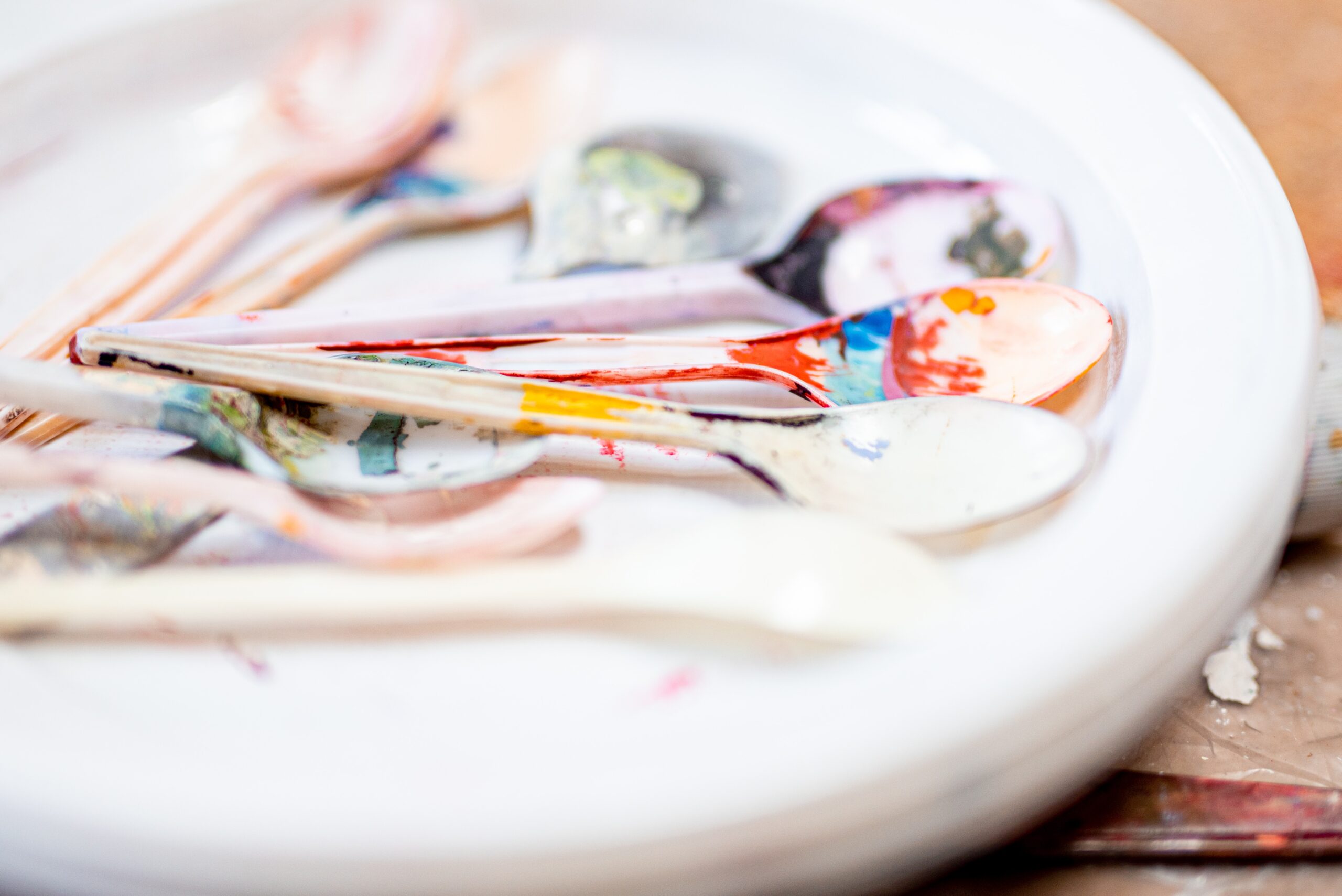When it comes to the world of painting, selecting the right materials and techniques can be pivotal in achieving the desired results. One common query that arises is whether it is possible to paint acrylic over latex. This article sheds light on this topic, aiming to clarify whether or not this combination is a feasible option for your painting projects.
Can You Paint Acrylic Over Latex
When it comes to painting, it is essential to understand the compatibility of different types of paint. One common question that arises is whether you can paint acrylic over latex. In this article, we will delve into the properties of both acrylic and latex paint, discuss their compatibility, and provide comprehensive steps for successfully painting acrylic over latex.
Understanding Acrylic Paint
Acrylic paint is a versatile and widely-used type of paint that is known for its quick drying time and durability. It is water-based and contains pigments suspended in an acrylic polymer emulsion. This type of paint is known for its vibrant colors, and it can be used on various surfaces, including wood, canvas, metal, and plastic.
Acrylic paint offers many benefits, such as its ability to adhere well to different surfaces and its resistance to flaking or cracking. It also allows for easy blending and layering, making it a popular choice among artists and DIY enthusiasts alike.

Understanding Latex Paint
Latex paint, also known as water-based paint, is one of the most commonly used paint types for interior and exterior surfaces. It is made of a polymer emulsion with pigments and additives mixed in water. Latex paint is known for its ease of application, fast drying time, low odor, and easy clean-up with water.
One of the key advantages of latex paint is its flexibility, which allows it to expand and contract with temperature changes, making it ideal for surfaces prone to movement. It is commonly used on walls, ceilings, and other areas where durability and ease of maintenance are important.
Compatibility of Acrylic and Latex
Now that we have a basic understanding of both acrylic and latex paint, let’s explore their compatibility. Generally, it is possible to paint acrylic over latex paint; however, certain factors should be considered to ensure a successful application.
The most important factor to consider is the condition of the existing latex paint. If it is in good condition, meaning it is clean, free from peeling or cracking, and properly adhered to the surface, you can proceed with painting acrylic over it. However, if the latex paint is in poor condition, it is recommended to remove it entirely before applying the acrylic paint.

Preparation Steps
Before painting acrylic over latex, it is crucial to prepare the surface properly. This involves cleaning the surface, sanding the latex paint, and priming the surface.
Cleaning the Surface
Begin by thoroughly cleaning the surface using a mild detergent or a solution of water and vinegar. Remove any dirt, grease, or other contaminants that may affect the adhesion of the new paint. Rinse the surface with clean water and allow it to dry completely.
Sanding the Latex Paint
Next, lightly sand the latex paint using fine-grit sandpaper. This will help create a rough surface for better adhesion of the acrylic paint. Be sure to remove any dust or debris resulting from sanding.
Priming the Surface
To further enhance adhesion and create a smooth base for the acrylic paint, apply a suitable primer. Choose a primer specifically designed for acrylic paint, preferably one that is compatible with latex as well. Apply the primer evenly and allow it to dry completely according to the manufacturer’s instructions.
Painting Techniques
Once the surface is properly prepared, you can proceed with painting acrylic over latex. There are several techniques you can use, depending on the size and nature of the project.
Using a Roller
Using a roller is an efficient method for covering large surfaces, such as walls or ceilings. Start by pouring the acrylic paint into a roller tray and load the roller evenly. Begin painting from the top, working your way down in smooth, overlapping strokes. Ensure even coverage by applying multiple thin coats, allowing sufficient drying time between each coat.
Using a Brush
When painting smaller areas or surfaces with intricate details, a brush is the preferred tool. dip the brush into the acrylic paint, removing any excess on the rim of the paint container. Apply the paint in even, smooth strokes, following the grain of the surface. Similar to using a roller, apply multiple thin coats for optimal coverage and allow each coat to dry before applying the next.
Spray Painting
Spray painting is an alternative technique that can be used for certain projects, such as furniture or decorative items. Ensure proper ventilation and apply the acrylic paint evenly using a spray gun or aerosol can, following the manufacturer’s instructions. Be mindful of overspray and protect surrounding areas with drop cloths or masking tape.

Drying and Curing Time
After applying the acrylic paint over latex, it is crucial to allow sufficient drying and curing time. While acrylic paint dries relatively quickly, it needs time to fully cure and harden. Generally, it is recommended to allow the paint to dry for at least 24 hours before subjecting it to any stress or handling. Keep in mind that drying and curing times may vary depending on factors such as temperature, humidity, and the number of coats applied.
Potential Problems and Solutions
As with any painting project, there may be potential problems that can occur when painting acrylic over latex. Here are some common issues and their solutions:
Lifting or Cracking of Paint
If the new acrylic paint lifts or cracks after application, it may indicate poor adhesion. In this case, it is important to remove the peeling paint, sand the surface, and reapply the paint, ensuring proper surface preparation.
Uneven or Patchy Application
Uneven or patchy application can occur if the paint is not applied evenly or if the surface was not properly primed. To fix this issue, lightly sand the uneven areas, apply a new coat of paint, and ensure proper coverage and drying time between coats.
Peeling or Chipping
If the newly painted surface starts to peel or chip, it may indicate an issue with the adhesion of the paint layers. To address this problem, remove the peeling or chipped paint, sand the area, and repaint, ensuring proper surface preparation and application techniques.
Sealing the Painted Surface
To protect the painted surface and enhance its longevity, it is recommended to apply a suitable sealer. There are different options available for sealing a surface painted with acrylic over latex.
Using a Clear Acrylic Sealer
A clear acrylic sealer can provide a protective layer over the painted surface without altering its appearance. Choose a sealer specifically designed for acrylic paint and apply it evenly using a brush or sprayer, following the manufacturer’s instructions.
Using a Polyurethane Sealer
Polyurethane sealers are another option for sealing acrylic paint. They offer a durable and glossy finish, providing protection against scratches and moisture. Apply the polyurethane sealant using a brush or roller, ensuring even coverage and allowing sufficient drying time between coats.
Applying a Protective Coat of Latex
Alternatively, you can apply a protective coat of latex paint over the acrylic paint. This can be done by selecting a clear latex topcoat or by using a latex paint in a suitable color. Apply the latex paint evenly using a brush or roller, ensuring proper coverage and drying time between coats.
Considerations and Tips
When painting acrylic over latex, there are a few considerations and tips that can help ensure a successful and long-lasting result.
Testing on a Small Area
Before proceeding with the entire project, it is advisable to test the adhesion and compatibility of the acrylic paint on a small, inconspicuous area. This will allow you to assess how well the paint adheres, dries, and interacts with the existing latex paint.
Using High-Quality Paints
Investing in high-quality acrylic and latex paints is essential for achieving a professional finish. High-quality paints are formulated to provide better adhesion, durability, and color retention, resulting in a longer-lasting and visually appealing result.
Applying Thin Coats
When painting with acrylic over latex, it is better to apply multiple thin coats rather than one thick coat. Thin coats dry faster and are less likely to cause issues such as cracking or uneven application. Ensure each coat is fully dry before applying the next.
Maintaining Proper Ventilation
Whether you are using a roller, brush, or spray gun, it is crucial to maintain proper ventilation throughout the painting process. Open windows or use exhaust fans to ensure fresh air circulation, which can help with the drying process and minimize the inhalation of fumes.
Painting acrylic over latex can be a successful endeavor if the proper steps are followed. By understanding the compatibility and preparing the surface adequately, you can achieve a professional finish that is both visually appealing and durable. Remember to follow the recommended techniques, address any potential problems promptly, and seal the painted surface to maximize its longevity. With these considerations in mind, you can confidently embark on your acrylic painting project over latex and enjoy the transformative power of great paintwork.



